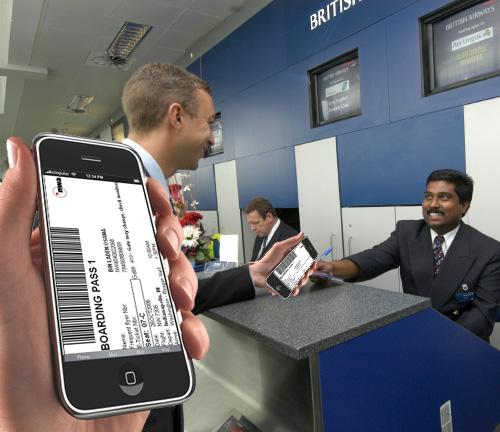
General
Operating Frequency
N96-1 (RM-247, Global) WCDMA2100/900 (HSDPA) / EGSM900, GSM850/1800/1900 MHz (EGPRS)
N96-3 (RM-472, Americas) – WCDMA1900/850 (HSDPA) / EGSM900, GSM850/1800/1900 MHz (EGPRS)
N96 (RM-297, PR China) - EGSM900, GSM850/1800/1900 MHz (EGPRS)
Automatic switching between bands and modes
DVB-H, 470-750 MHz
Dimensions
Volume: 92 cc
Weight: 125 g
Length: 103 mm
Width: 55 mm
Depth:18 mm, locally up to 20 mm
Memory Functions*
16GB internal flash memory
MicroSD memory card slot (hot swappable) for expandability and flexibility
- Expand up to a total of 24 GB, for example with the Nokia MU-43 8GB microSD memory card (sold separately) Approximate dynamic memory capacity indication with 16GB storage:
-Video: 40 hours**
-Music: 12,000 tracks***
128MB RAM, 256MB system memory (operating system plus dynamic user data area)
Approximate dynamic memory capacity indication with 16GB storage:
-Video: 40 hours**
-Music: 12,000 tracks***
128MB RAM, 256MB system memory (operating system plus dynamic user data area)
Power Management
Battery: Nokia Battery BL-5F, 950 mAh
Talk time: up to 160 / 230 minutes (WCDMA / GSM)
Stand-by time: up to 200 / 230 hours (WCDMA / GSM)
Video playback: up to 5 hours (offline mode)
Music playback: up to 14 hours (offline mode)
TV playback: up to 4 hours (DVB-H)
*Operation times may vary depending on radio access technology used, operator network configuration and usage.
Display and User Interface
2.8” QVGA (240 x 320 pixels) LCD TFT display with up to 16 million colors
User Interface: S60 3rd Edition, Feature Pack 2
Active standby screen, Multimedia menu
Media keys, Multimedia access key, lockswitch, volume key, numeric (ITU-T) keypad, menu key, clear key, soft keys, send and end keys, power key, camera shutter key
Third Party Application Support
Operating system: Symbian OS 9.3
Nokia S60 third edition, feature pack 2
Java™ MIDP 2.1, CLDC 1.1 (Connected Limited Device Configuration (J2ME))
Flash Lite 3.0
C++ and Java SDKs
Downloadable third-party Java™ and Symbian applications
Support for Widgets
Call Management
Contacts: advanced contacts database with support for multiple phone and e-mail details per entry and thumbnail pictures
Speed dialing, voice dialing (speaker independent) and voice commands
Logs: lists of dialed, received and missed calls
Conference call
Integrated hands-free speakers
Data Transfer
WCDMA HSDPA with simultaneous voice and packet data (PS max speed DL/UL= 3.6Mbps/384kbps, CS max speed 64kbps)
Dual Transfer Mode (DTM) support for simultaneous voice and packet data connection in GSM/EDGE networks. Simple class A, multi slot class 11, max speed DL/UL: 177.6/118.4kbps
EGPRS class B, multi slot class 32, max speed DL/UL= 296/177.6kbps
GPRS class B, multi slot class 32, max speed DL/UL= 107/64.2kbps
Video & TV
Video Center
Enhanced video center: central hub for video experiences
Access to last played video and easy resume
My videos: collection of stored videos
Access to Internet Videos, compatible with RSS feeds and video podcasts, with direct wireless updates and downloads
Video directory to discover new Internet Videos
Video Codecs and Formats
MPEG-4 Part 2 (H.263/SP), up to VGA 30 fps, hardware-accelerated codec, scaled to max QVGA on device screen, or max SDTV on TV-out
MPEG-4 Part 10 (H.264/AVC), up to VGA 30 fps, hardware-accelerated codec, scaled to max QVGA on device screen, or SDTV on TV-out
Windows Media Video (WMV9), up to CIF/QVGA 30 fps, hardware-accelerated codec, scaled to max QVGA on device screen, or SDTV on TV-out
RealVideo QCIF at 30 fps
Flash video support in browser
DRM support: OMA DRM 1, OMA DRM 2, WM DRM
Live TV
Broadcast Television (DVB-H) capable
-DVB-H based mobile TV with internal antenna
-DVB-H Class C, 470-750 MHz
Program Guide (OMA BCAST ESG), with automatic updates and channel discovery
Instant Replay of TV program (up to 30 seconds)
Recording of TV programs for later viewing
Reminder setting via Program Guide
Interactive services
Multiple subscription and payment methods (pay TV including previews, free-to-air, pay per view), channel and content protection
Browser-based video access
Support for download, streaming and progressive download
Support for Flash video
Other video enablers
2.8” display
16 GB memory
Hi-Speed USB 2.0 connectivity
Integrated kickstand and landscape-oriented speakers
Media keys
Music
Music Features
Digital music player – supports MP3, AAC, eAAC+, WMA, album art
Playlist editing and sharing
Equalizer and visualization
Search, browse and purchase songs online in Nokia Music Store – with support for Windows Media DRM protected files
Radio and other
Stereo FM radio (87.5-108MHz, 76-90MHz) with support for RDS, Visual Radio™ and use of FM radio in offline mode
Internet Radio
Other music enablers
16 GB internal memory
Hi-Speed USB 2.0 connectivity
Support for standard 3.5mm headphones
Media keys
Integrated stereo speakers
Podcasting with direct wireless access to directory, feed updates and downloads
Listen to music wirelessly via Bluetooth stereo audio (A2DP)









